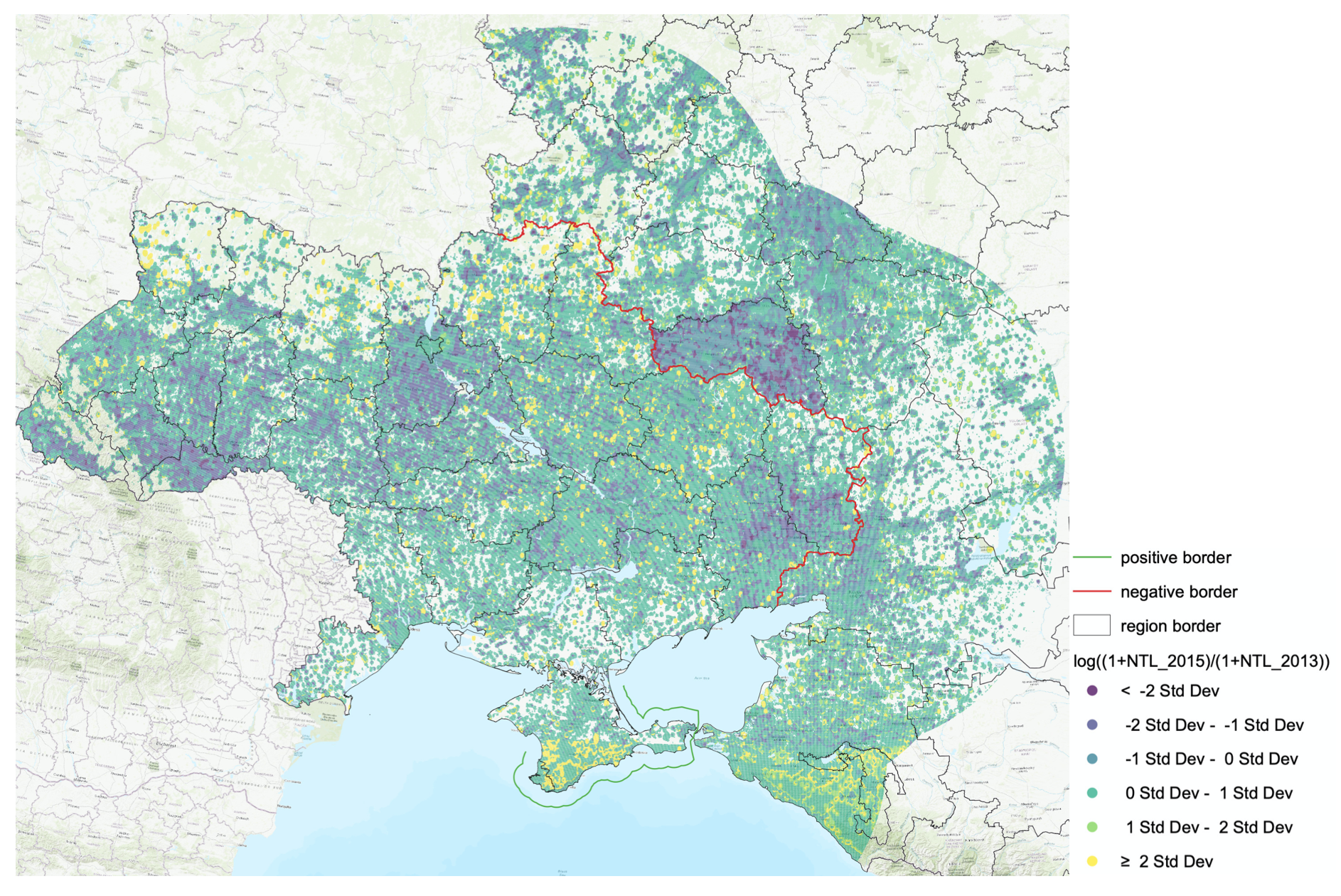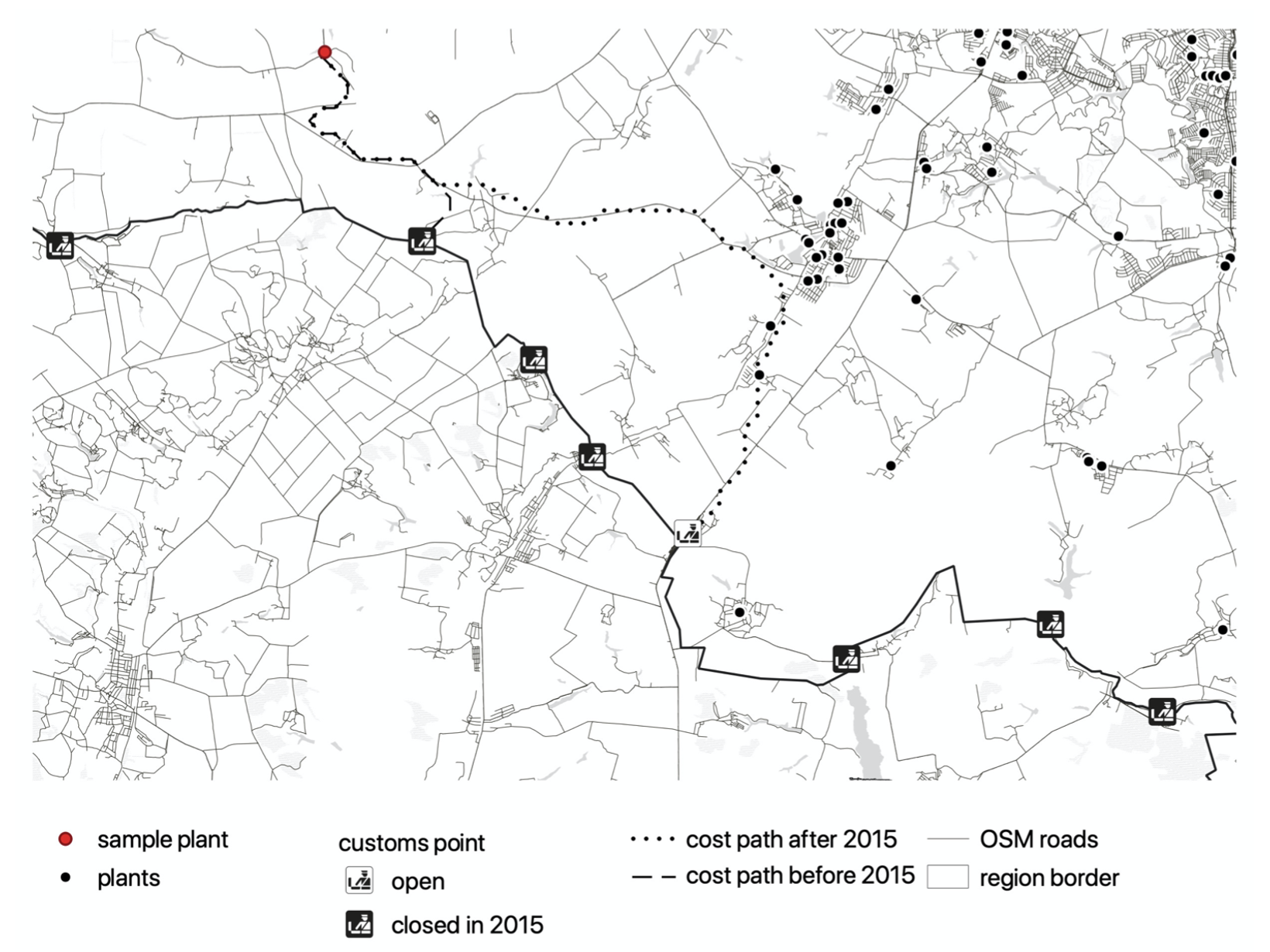The benefits and costs of international trade and factor mobility are well understood. In particular, freer trade increases incomes and the inequality in their distribution. The possibility of higher incomes encourages the removal of national borders, whereas increasing inequality kindles nationalism to push in the opposite direction. The history of globalisation is punctuated by imbalances in its benefits and costs, giving rise to alternating episodes of rapid globalisation—as in 1870-1914—and of prolonged contraction—as in 1914-1945. Put differently, the frictions in the movement of goods and people created by national borders constantly change over time. This becomes especially clear in periods of downturns of globalisation where major changes to the permeability of borders occurs and, in the extreme case, where the borders themselves are partially redrawn. The latter has important negative economic consequences and often results in war. We may have entered a new period of ‘globalisation downturn’ lately as frictions due to national borders increase and borders are partly redrawn. Brexit and the recent conflict in Ukraine provide salient examples of border changes. While both generate some economic hardships, the former occurred peacefully whereas the latter has culminated in war.
In recent work (Behrens and Kuznetsova 2022), my co-author and I exploit the Russia-Ukraine conflict—following the Russian annexation of Crimea in 2014—as an exogenous change in market access to investigate its consequences for the economic performance of Russian border regions.
Regions to the south of Russia close to the border with Ukraine saw an increase in their market access as the border with Crimea de facto dissolved. Conversely, regions to the north of Russia close to the border with Ukraine saw a decrease in their market access as the Ukrainian government shut down border crossings and restricted the movements of goods and of people in response to the annexation. Our study follows an extensive existing literature that investigates the economic effects of changes in market access on regional economic outcomes.
Contrary to that literature, which has analysed the effects of the creation or the removal of borders at different points in time, our setting allows us to look more finely at the effects of differential changes in market access at a single point in time within a single pair of countries.
We leverage detailed nighttime lights satellite data for 1992-2018, a large geo-referenced manufacturing plant-level database that we created, and a new data set on all international and all local border crossings (in the Bryansk, Kursk, Belgorod, and Voronezh regions) to look at changes in lights and plants exit along the border.
We conjecture that regions to the north ceteris paribus performed less well since they were more exposed to a hardening international border while being far away from Crimea, whereas regions to the south performed better as they gained unfettered access to the Crimean Peninsula but were far from the hardening international land border with Ukraine in the north. Figure 1 illustrates this by depicting the raw changes in nighttime lights between 2013 and 2015. As shown, regions to the south experienced more positive change (yellow and light green colours), whereas regions to the north—especially the Belgorod region—experienced more negative changes (in dark blue and blue colours).
Figure 1 Raw changes in nighttime lights between 2013 and 2015
As two opposing changes occurred along the Russia-Ukraine border in 2014, we measure a region or a manufacturing plant’s relative exposure to these border changes. While this can be done in a variety of ways (see Behrens and Kuznetsova 2022), for expositional purposes we focus on a measure that is the ratio of the distance to the southern border (in green in Figure 1) to the distance to the northern border (in red in Figure 1). Smaller values of this measure indicate more positive exposure to the border removal in the south, whereas larger values indicate more negative exposure to the hardening border in the north.
Figure 2 GDP-weighted lights (left panel) and plant exit (right panel) and relative distance to the border
Figure 2 depicts coefficients from an event-study regression, where we look at the evolution of GDP-weighted nighttime lights—in the left panel—and of plant exit—in the right panel—as a function of our relative distance measure. As shown, areas and plants with a larger relative distance measure (i.e. those far from the south and close to the north) were growing less and exited more starting around 2012–2014, a reversal of the previous trend where the north was doing better than the south. We show in our discussion paper that these results are robust to the inclusion of controls and different combinations of fixed effects and to a large battery of robustness checks: areas more exposed to increasing border frictions saw less growth in lights and more plant exit.
How large are the effects of border changes for nighttime lights and plant exit? On average, the intensity of nighttime lights increased by about 55% between 2014 and 2018. Yet, growth in nighttime lights after 2014 was about 40% lower for the most exposed areas compared to the least exposed areas. We estimate the elasticity of regional GDP to regional nighttime lights between 2008–2013 to be 0.865 in Russia. Thus, a 40% difference in nighttime lights growth for the most exposed areas translates into an approximately 34.6% difference in GDP growth, a sizable effect. Turning to plant exit, the exit probability after 2014 increased by about 33% more for the most exposed plants compared to the least exposed plants. Again, this is a sizeable effect. Thus, changes in market access do seem to matter substantially for economic growth and plant survival of border regions, especially between highly integrated trading partners that share a common labour market.
Turning to the importance of this common labour market—which was characterised by substantial cross-border movements before 2014—we exploit the changes in the closing of border crossings in the northern regions starting in 2015.
Figure 3 Changes in local border crossings and distance travelled
Historically, the regions on both sides of the border—especially in the Belgorod region and close to the Donbass—were a highly integrated industrial centre and labour market with substantial daily cross-border movements.
Simplified procedures for crossing the border for the local populations were in place: residents of border regions could cross the border at numerous local border crossings in the region they are residents of, and they could stay on the territory of the neighbouring state for personal or work-related reasons without specific formalities. This changed starting in March 2015, when the Ukrainian government shut down all local border crossings and only kept open the international border crossings. As Figure 3 shows, this implied that for some workers in Russia, access to Ukraine changed substantially in terms of the closest border crossing. Exploiting this variation, we find some small but precisely estimated effects for nighttime lights: areas that experienced a larger increase in their distance to the nearest open border crossing experienced less growth after 2015. We do not, however, find effects for plants besides a general negative effect for the large cities.
To conclude, we find evidence consistent with the old idea that removing or weakening borders improves the outcomes of nearby regions, whereas the creation or closing of borders worsens them. While these results are hardly surprising, the very granular spatial nature of our data reveals that some of these effects are highly localised and likely channelled by the cross-border movement of labour.
References
Behrens, K and M Kuznetsova (2022), “Casualties of border changes: Evidence from nighttime lights and plant exit”, CEPR Discussion Paper No. 17528.
Redding, S J and D M Sturm (2008), “The costs of remoteness: Evidence from German division and reunification”, American Economic Review 98(5): 1766–97.
Ahlfeldt, G M, S J Redding, D M Sturm and N Wolf (2015), “The economics of density: Evidence from the Berlin Wall”, Econometrica 83(6): 2127– 2189.
Brülhart, M, O Cadot and A Himbert (2019), “Let there be light: Trade and the development of border regions”, CEPR Discussion Paper No. 13515.
Brülhart, M, C Carrère and F Trionfetti (2012), “How wages and employment adjust to trade liberalization: Quasi-experimental evidence from Austria”, Journal of International Economics 86(1): 68–81.
Brülhart, M, C Carrère and F Robert-Nicoud (2018), “Trade and towns: Heterogeneous adjustment to a border shock”, Journal of Urban Economics 105: 162–175.
Garicano, L, D Rohner and B Weder di Mauro (eds) (2022), Global Economic Consequences of the War in Ukraine: Sanctions, Supply Chains and Sustainability, CEPR Press.
Hoang, K, T L D Huynh and S Ongena (2022), "The impact of foreign sanctions on firm performance in Russia”, VoxEU.org, 22 July.
Korovkin, V and A Makarin (2021), “Production Networks and War: Evidence from Ukraine”, CEPR Discussion Paper No. 16759.
Munroe, E, A Nosach, J F Riaño, A Tur-Prats and F Valencia Caicedo (2022), "The Sound and the Fury in Ukraine”, VoxEU.org, 8 June.
Ruta, M (2022), "How the war in Ukraine may reshape globalisation”, VoxEU.org, 5 May.
Zhukov, Y M (2016), “Trading hard hats for combat helmets: The economics of rebellion in eastern Ukraine”, Journal of Comparative Economics 44(1): 1–15.






